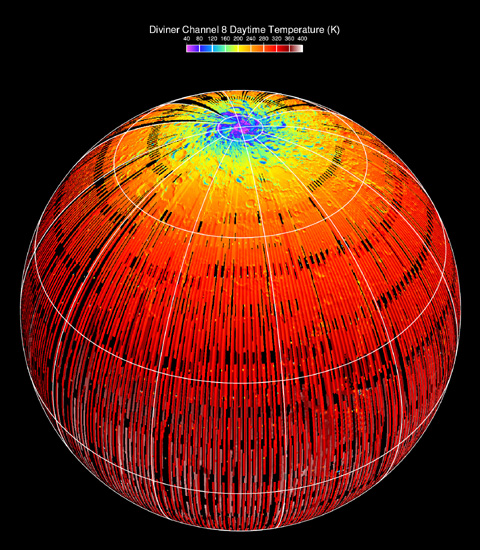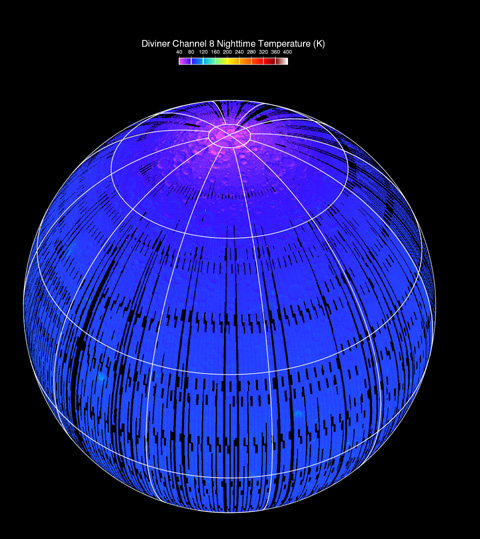Global Warming Prediction Project

Atmospheric Thermal Effect vs Greenhouse Effect
06.04.2012

A recent paper by Nikolov and Zeller and a accompanying document introduced the new concept of Atmospheric Thermal Effect (ATE). Like the Greenhouse Effect (GE), ATE describes why a celestial body with an atmosphere has a higher surface temperature than a celestial body without an atmosphere like the moon.
The GE theory is based on the the Stefan-Boltzmann-Law, which suggests that the surface temperature of an airless Earth would be -18°C (255K). Given the actual mean surface temperature of 15°C (288K) this results in a Greenhouse Effect of 33K caused essentially by the greenhouse gases in the atmosphere, according to GE theory.
In their paper Nikolov and Zeller clearly show that the Stefan-Boltzmann-Law (SB Law; Eq. (3) in their paper) has been (mathematically) incorrectly applied in the past and resulting from that, has drawn wrong conclusions about the Greenhouse Effect of 33K. According to their new ATE concept (Eq. (6) in their paper) as well as shown by current satellite temperature measurements of the entire moon as a proxy for an atmosphere-free Earth, the surface temperature of an airless Earth would be around 155K which is 100K lower than stated by the GE theory. This means that greenhouse gases would have to account for a temperature boost of 133K instead of 33K while ATE shows that this boost is due to the inner kinetic energy of the atmosphere, given by pressure and volume, according to the Ideal Gas Law.
They summarize :
-
"We have shown that the SB Law relating radiation intensity to temperature (Eq. 1 & 3) has been incorrectly applied in the past to predict mean surface temperatures of celestial bodies including Mars, Mercury, and the Moon. Due to Hölder’s inequality between non-linear integrals, the effective emission temperature computed from Eq. (3) is always significantly higher than the actual (arithmetic) mean temperature of an airless planet. This makes the planetary emission temperature Te produced by Eq. (3) physically incompatible with any real measured temperatures on Earth’s surface or in the atmosphere. By using a proper integration of the SB Law over a sphere, we derived a new formula (Eq. 6) for estimating the average temperature of a planetary gray body (subject to some assumptions). We then compared the Moon mean temperature predicted by this formula to recent thermal observations and detailed energy budget calculation of the lunar surface conducted by the NASA Diviner Radiometer Experiment. Results indicate that Moon’s average temperature is likely very close to the estimate produced by our Eq. (6). At the same time, Moon measurements also show that the current estimate of 255K for the lunar average surface temperature widely used in climate science is unrealistically high; hence, further demonstrating the inadequacy of Eq. (3). The main result from the Earth-Moon comparison (assuming the Moon is a perfect gray-body proxy of Earth) is that the Earth’s ATE, also known as natural Greenhouse Effect, is 3 to 7 times larger than currently assumed. In other words, the current GE theory underestimates the extra atmospheric warmth by about 100K! In terms of relative thermal enhancement, the ATE translates into NTE = 287.6/154.7 = 1.86.
-
-
This finding invites the question: How could such a huge (> 80%) thermal enhancement be the result of a handful of IR-absorbing gases that collectively amount to less than 0.5% of total atmospheric mass? We recall from our earlier discussion that, according to observations, the atmosphere only absorbs 157 - 161 W/m2 long-wave radiation from the surface. Can this small flux increase the temperature of the lower troposphere by more than 100K compared to an airless environment? The answer obviously is that the observed temperature boost near the surface cannot be possibly due to that atmospheric IR absorption! Hence, the evidence suggests that the lower troposphere contains much more kinetic energy than radiative transfer alone can account for! The thermodynamics of the atmosphere is governed by the Gas Law, which states that the internal kinetic energy and temperature of a gas mixture is also a function of pressure (among other things, of course). In the case of an isobaric process, where pressure is constant and independent of temperature such as the one operating at the Earth surface, it is the physical force of atmospheric pressure that can only fully explain the observed near-surface thermal enhancement (NTE)."
This is an essential finding which seriously questions GE and climate sensitivity.
NASA’s Diviner infrared measurements showing daytime maximum and nighttime minimum temperature fields (Source: Diviner Web Site)
The objective of this project is doing monthly modeling and prediction of global temperature anomalies through self-organizing knowledge extraction from public data. The project is impartial and has no hidden personal, financial, political or other interests. It is entirely independent, transparent, and open in results.



